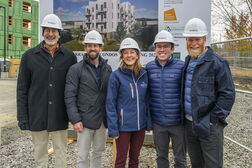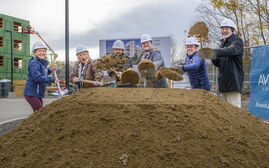
Hiring in Maine remains tough, even as supplemental unemployment benefits end
 Photo / Jessica Hall
At Hammond Lumber in Damariscotta on Friday, the relentless hiring crunch continued.
Photo / Jessica Hall
At Hammond Lumber in Damariscotta on Friday, the relentless hiring crunch continued.
Big Al’s Super Values store in Wiscasset is closing after 35 years due to staffing shortages amid the pandemic.
LincolnHealth’s Miles Hospital in Damariscotta reduced its outpatient lab hours because it doesn't have enough workers.
Avesta Housing continues to have trouble hiring resident care assistants in its long-term care facilities despite increasing wages and referral bonuses for staff.
“It’s still very hard to find a lot of applicants,” Dana Totman, president and CEO of Avesta Housing, told Mainebiz. “We’re seeing far fewer people applying. Or they don’t show up for an interview, even when it’s virtual. Or they get hired and don’t show up on the first day of work.”
Totman said Avesta, a nonprofit affordable housing provider, not only has difficulty finding resident care assistants, but landscape and maintenance workers too.

Even higher-paying jobs are tougher to fill. Avesta is currently looking for an accounting specialist. Two years ago, it would have received 70 applicants for the job, but so far has fielded only 20 applicants, Totman said.
“There’s an incredibly tight, tight labor pool. Things were a bit challenging before the pandemic. It has been for a few years a tough labor market. The pandemic exacerbated things,” Totman said.
Big Al’s discount store decided to close its doors permanently after temporarily reducing hours and days of operation due to lack of staffing. Owner Al Cohen pointed to supplemental unemployment payments as part of the problem in hiring.
Those $300 payments, on top of standard unemployment benefits, ended Sept. 6. The federal government introduced the enhanced unemployment benefits as part of an effort to boost the economy during the pandemic.
Maine’s unemployment was 4.9% in August. Before the pandemic, in February, 2020, it was 3.1%.
But the tight labor market is more complicated than Cohen’s assertion that people were staying home to collect unemployment.
The labor force participation rate decreased to 60.3% in August, down from 62.6% in February 2020. That represents more than 25,000 people missing from the labor force, according to the Center for Workforce Research and Information at the Maine Department of Labor.
“There are a range of reasons, including infection and fear of infection from the virus, business closures, and supply-chain problems. Many parents have not been available for work because child care was not available in a period when many schools were not open five full days a week,” said Glenn Mills, deputy director of the center.
“There may have been an increase in retirements at a time when stock and real estate markets were at record highs. Many hospitality businesses have typically employed foreign labor during the summer tourism season, but those workers were not available this year,” Mills said.
He added that there has been a clear correlation between COVID case counts and the job recovery. Declining case counts lead to job gains; rising case counts stall the recovery.
Maine has seen a recent uptick in COVID-19 cases. The state has seen more than 89,000 cases of coronavirus and more than 1,000 deaths from the virus.
“To some degree, things like sign-on bonuses don’t help the overall situation. If all employers in Maine are just swapping workers, that’s not good. We need to encourage new Mainers with job training and entice young people to come to Maine,” Totman said.














0 Comments